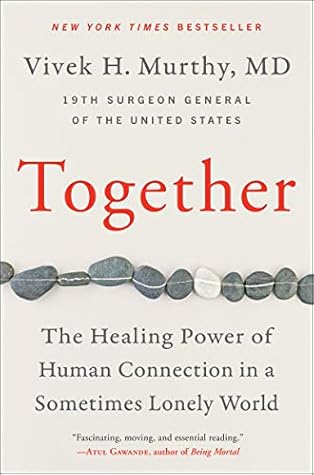More on this book
Community
Kindle Notes & Highlights
This was loneliness as abandonment; the feeling of being left behind, cast out, ignored by society.
to share a sense of common ground, common interests, pursuits, and values with others who truly care about you.
9/11 Boat Lift rescued nearly half a million people, becoming the largest boat rescue in the world’s history—even larger than the Dunkirk evacuation of WWII.
how what we seem to value most in modern society—status, wealth, achievement, and fame—doesn’t guarantee happiness.
bucking the prevailing assumptions about success and redefining his own ambitions in social, rather than financial terms.
Loneliness is the subjective feeling that you’re lacking the social connections you need.
the feeling of closeness, trust, and the affection of genuine friends, loved ones, and community.
Intimate,
Relational,
Collective
everyone’s level of need for social connection is different,
quality of our connections and how we feel about them.
Isolation is considered a risk factor for loneliness
we’re so involved in our work or creative pursuits that we don’t feel at all lonely.
Solitude, by contrast, is a state of peaceful aloneness or voluntary isolation.
we work through issues, gain clarity about our feelings, and build comfort with ourselves.
Solitude, paradoxically, protects against loneliness.
Shame and fear thus conspire to turn loneliness into a self-perpetuating condition, triggering self-doubt, which in turn lowers self-esteem and discourages us from reaching out for help.
acknowledge the vital need that all humans have for social connection.
lift the burden of shame, blame, and criticism that fuels the stigma around loneliness.
Social isolation and loneliness are akin to a chronic long-term condition
he listened without judgment and seemed to genuinely care about her well-being. When
stop asking what’s the matter with the patient and start asking what matters to them.”
reduce both its duration and negative effects and actually improve the overall quality of our lives.
When you’re chronically lonely—as a child or an adult—it seeps deeply into your state of mind.
you question your self-worth,
liken loneliness to hunger and thirst, identifying it as a necessary warning signal with biochemical and genetic roots.
“We’re the only animal on the planet,” Bill told me, “that goes out of its way to share the contents of our minds with others, even when there’s no immediate gain.” We do this because it helps get us on the same page and allows us to understand one another better, which has longer-term advantages for cooperation and efficacy.
stories make individuals feel connected and promote a sense of belonging.
words, pictures, music, and rituals
They bring us together.
“If I’m not sharing knowledge and emotions, then I feel lonely.”
Prosocial behavior, like helping others, leaves people feeling less anxious and threatened and more secure.
while making you more defensive against those who are not part of your group.
even if we think of ourselves as profoundly introverted or task-oriented—we spend most of our time thinking about other people.
research has found that babies start to favor faces of their family’s race and ethnicity.
the first sign of isolation, whether alone or among strangers, the stranded individual’s sympathetic nervous system would go on alert, triggering fear and immediate preparation to fight or flee the situation.
With the senses on heightened alert it was possible for our stranded ancestors to detect the slightest noise or smell or shift of light that might signal a predator.
When we feel lonely, our bodies still react as if we were lost on the tundra surrounded by wild animals and members of alien tribes.
loss trigger this outpouring of hormones? Put simply, this distress signal is a biochemical echo of the stress state our distant forebears experienced when they were cut off from the tribe and had to face the threatening uncertainties of the wilderness alone. It’s like an intensely concentrated dose of loneliness.
our threat perception changes when we’re lonely,
lonely brains detect social threats twice as fast as non-lonely brains.
vicious cycle of suspicion, jealousy, and resentment. Loneliness thus fuels more loneliness until the fracture leads to severe alienation.
more susceptible to cultural bias, racial stereotyping, and discriminatory practices.
exaggerated reactions.
not everyone is equally susceptible to loneliness.
in evolutionary terms, this variability is useful,
some members of a community will be “so pained by disconnection that they are willing to defend their village,” while “others are willing to go out and explore but hopefully still have enough of a connection to come back
genes do play a role in chronic loneliness,
experience and circumstance


